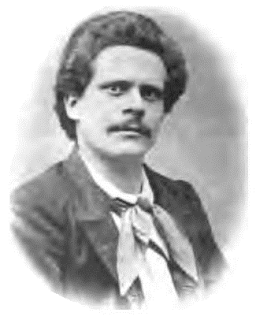National poet’s work inspired the fight for a united Italy
 |
| Carducci's funeral procession drew huge crowds on to the streets of Bologna |
Aged 71, he passed away at his home, Casa Carducci, near Porta Maggiore, a kilometre and a half from the centre of the Emilia-Romagna city. He had been in ill health for some time and was not well enough to travel to Stockholm to receive his prize, awarded in 1906, which was instead presented to him at his home.
His funeral at the Basilica di San Petronio in Piazza Maggiore followed a procession through the streets that attracted a huge crowd.
Carducci had been one of the most influential literary figures of his age and was professor of Italian literature at Bologna University, where he lectured for more than 40 years.
The Italian people revered Carducci as their national poet and he was made a senator for life by the King of Italy in 1890.
Carducci was born in 1835 in the hamlet of Val di Castello, part of Pietrasanta, in the province of Lucca in Tuscany and he spent his childhood in the wild Maremma area of the region.
After studying at the University of Pisa, Carducci was at the centre of a group of young men determined to overthrow the prevailing Romanticism in literature and return to classical models.
 |
| Carducci's poetry became an inspiration to patriots fighting for a united Italy |
The poets Giuseppe Parini, Vincenzo Monti and Ugo Foscolo were influences on him, as is evident from his first book of poems, Rime, produced in 1857.
In 1863, Carducci showed both his great power as a poet and the strength of his republican, anticlerical feelings in his Inno a Satana - Hymn to Satan - and, in 1867, in his Giambi ed epode - Iambics and Epodes - inspired by the politics of the time.
The best of Carducci’s poetry came in 1887 with Rime nuove - New Rhymes - and Odi Barbare - Barbarian Odes - which evoke the landscape of the Maremma and his childhood memories, the loss of his only son, and also recall the glory of Roman history.
Carducci’s enthusiasm for the classical led him to adapt Latin prosody to Italian verse and to imitate Horace and Virgil. His poetry was to inspire many Italians fighting for independence and for a united Italy.
The poet became the first Italian to receive the Nobel Prize for Literature in 1906. According to the Swedish Academy this was awarded ‘not only in consideration of his deep learning and critical research, but above all as a tribute to the creative energy, freshness of style and lyrical force, which characterise his poetic masterpieces’.
Carducci also wrote prose prolifically in the form of literary criticism. biographies, speeches and essays and he translated works by Goethe and Heine into Italian.
After his funeral on 19 February he was laid to rest at the Certosa di Bologna, the city’s monumental cemetery.
 |
| Pietrasanta's Cattedrale di San Martino |
Pietrasanta, the town where Carducci was born, is on the coast of northern Tuscany, to the north of Viareggio. It had Roman origins and part of a Roman wall still exists. The medieval town was built in 1255 upon the pre-existing Rocca di Sala fortress of the Lombards and the Duomo (Cathedral of San Martino) dates back to the 13th century. Pietrasanta grew in importance in the 15th century due to its marble, the beauty of which was first recognised by the sculptor, Michelangelo.
Find accommodation in Pietrasanta with Booking.com
 |
| Leonardo Bistolfi's monument to Giosuè Carducci in the garden of the Casa Carducci in Bologna |
The Museum of the Risorgimento in Bologna is now housed on the ground floor of the house where Carducci died in Piazza Carducci in the centre of the city. The museum has exhibits and documents that chronicle the history of the Risorgimento from the Napoleonic invasions of Italy to the end of the First World War. The museum was first inaugurated in 1893 and moved to Casa Carducci, the last home of the poet, in 1990. In the garden, there is an imposing monument to Carducci by the sculptor Leonardo Bistolfi.
Stay in Bologna with Booking.com
More reading:
How the revolutionary Ugo Foscolo expressed Italian sentiment in verse
Why Dante Alighieri remains in exile from his native Florence
The nobleman whose poetry inspired the oppressed
Also on this day:
1740: The birth of type designer Giambattista Bodoni
1918: The birth of designer Achille Castiglioni
1935: The birth of vocalist Edda Dell’Orso
1970: The birth of footballer Angelo Peruzzi
1979: The birth of motorcycle world champion Valentino Rossi
(Picture credits: Pietrasanta cathedral by Stephencdickson; Bologna monument by Nicola Quirico; via Wikimedia Commons)
No comments:
Post a Comment